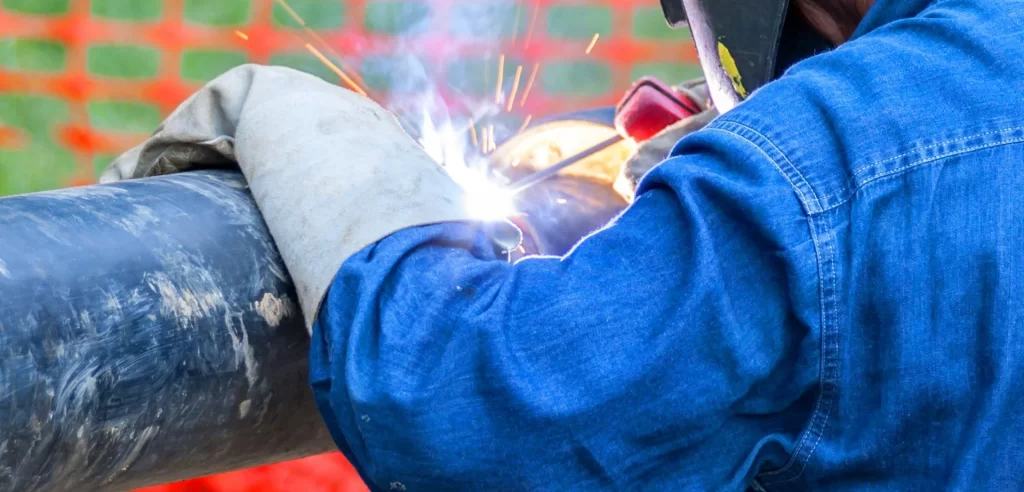Raise Welding Requirements with Professional Inspection Service
Raise Welding Requirements with Professional Inspection Service
Blog Article
The Necessary Sorts Of Welding Solutions Every Industry Ought To Know Concerning
From the standard yet reliable arc welding to the precision of laser beam of light welding, each approach supplies unique benefits and applications that drive the effectiveness and top quality of manufacturing. As industries progress and demand for innovative options grows, being well-versed in these welding strategies is not simply beneficial yet necessary for staying affordable and conference industry standards.
Arc Welding
Arc welding is a widely used welding process that makes use of an electric arc to join steel elements with each other. This method is prevalent in numerous industries because of its adaptability and performance in developing resilient and solid welds. The process involves creating an electrical arc between the base steel and a consumable electrode, usually made from a similar material. As the arc warms the work surfaces, they melt and fuse with each other, creating a solid joint upon cooling.
Among the vital advantages of arc welding is its capacity to bond a broad array of alloys and metals, making it ideal for diverse applications. Furthermore, arc welding can be performed making use of different variants, such as protected steel arc welding (SMAW), gas metal arc welding (GMAW), and flux-cored arc welding (FCAW), each offering certain advantages depending on the project demands.
Furthermore, arc welding is known for its simpleness and cost-effectiveness, making it a preferred choice for numerous producers and suppliers. By mastering the various methods and tools associated with arc welding, specialists can produce premium welds successfully and dependably.
Gas Metal Arc Welding (GMAW)

With correct strategy and devices configuration, GMAW can create strong, high-grade welds that meet sector criteria. Generally, GMAW is a versatile welding process that uses performance, adaptability, and reliability for a variety of welding applications across various industries.
Gas Tungsten Arc Welding (GTAW)
Gas Metal Arc Welding (GMAW) supplies exceptional welding effectiveness, and similarly, Gas Tungsten Arc Welding (GTAW) brings a various set of benefits to the table in the realm of welding services (Welding Inspection Service). GTAW, also called Tungsten Inert Gas (TIG) welding, is a high-quality and functional welding process generally utilized in sectors such as aerospace, automotive, and manufacturing

One of the vital benefits of GTAW is its ability to reference generate high-grade, specific welds on a range of metals, including light weight aluminum, stainless steel, and copper alloys. This process allows for better control over the welding arc, resulting in tidy, spatter-free welds with minimal post-weld cleanup required.
GTAW is additionally favored for its ability to bond thin products without triggering warping or distortion, making it suitable for applications where appearances and precision are critical. In addition, the TIG welding process can be utilized with or without filler steel, offering versatility in welding various joint types and thicknesses.

Resistance Welding
An extensively made use of welding approach in various sectors due to its efficiency and effectiveness is Resistance Welding. There are a number of kinds of resistance welding, including area welding, joint welding, and projection welding, each fit for specific applications.
Place welding is commonly used in the automobile market for signing up with sheet steel parts. Forecast welding is ideal for welding nuts, screws, or other fasteners onto metal components.

Laser Light Beam Welding
Using a very concentrated laser beam to thaw and sign up with steel components, laser beam of light welding is a specific and efficient welding technique typically utilized in numerous industries. This innovative method uses several advantages, including minimal distortion, high welding speeds, and the capacity to weld products with high accuracy.
Laser beam of light welding works by routing a laser beam at the work surface, which produces a liquified swimming pool that fuses the materials with each other upon solidification. The process is non-contact, implying there is no requirement for the welding tool to touch the workpiece, minimizing the threat of contamination or damages. Furthermore, the focused beam of light permits for deep weld browse around this site infiltration and narrow weld seams, making it optimal for applications requiring high accuracy and strength.
Industries such as automobile, aerospace, electronics, and medical tool production usually rely upon laser light beam welding for its capability to produce premium welds with very little heat-affected areas. As technology remains to development, laser welding is anticipated to play a progressively considerable function in the weblink manufacture of intricate elements throughout different sectors.
Conclusion
To conclude, comprehending the important types of welding solutions such as Arc Welding, Gas Steel Arc Welding (GMAW), Gas Tungsten Arc Welding (GTAW), Resistance Welding, and Laser Beam Welding is crucial for each market. Each of these techniques plays a special duty in the production and building and construction processes, guaranteeing solid and durable connections for different products. By knowing these welding services, sectors can make informed decisions regarding which approach ideal matches their details demands.
From the traditional yet reliable arc welding to the accuracy of laser light beam welding, each technique offers distinctive advantages and applications that drive the performance and top quality of production.Arc welding is a widely utilized welding process that uses an electrical arc to join steel components with each other.Gas Metal Arc Welding (GMAW) is an extremely efficient and typically made use of welding process in different sectors for joining metal parts together utilizing a securing gas and a palatable electrode. There are several types of resistance welding, consisting of area welding, joint welding, and estimate welding, each matched for specific applications.
In conclusion, understanding the crucial kinds of welding solutions such as Arc Welding, Gas Metal Arc Welding (GMAW), Gas Tungsten Arc Welding (GTAW), Resistance Welding, and Laser Beam Welding is crucial for every sector. - Welding Inspection Service
Report this page